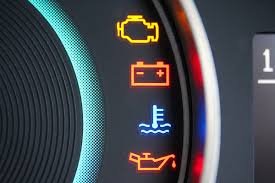When you are driving smoothly on the road and suddenly a small light flashes on the dashboard. Your heart sinks! It’s either an engine symbol, a low tyre pressure indicator or even something more mysterious. Mostly it’s easy to ignore these signs especially if your car seems to be working fine. But these warning signs are your car’s way of telling you that something is up and ignoring them can put you in danger and cause you a big chunk of money.
At Auto Veto, we often see vehicles come in for repairs or MOT Croydon testing where the issue could have been avoided if a dashboard warning had been checked sooner. Understanding what these lights mean and acting on them accordingly can save you money, prevent breakdowns, and keep your car safe.
What Dashboard Warning Lights Really Mean
Modern vehicles have complex systems which are designed to monitor their performance and safety. When something isn’t right, the system will alert you through the lights on the dashboard. This color of light usually indicates about the urgency of the issue:
Red- Shows a serious issue, means you need to stop driving as soon as it’s safe.
Amber/Yellow- Warning, you should get it checked soon.
Green/Blue: Informational, includes the system which is in use like headlight and cruise control.
Unfortunately, many drivers ignore amber lights thinking they’re harmless. But even small issues, such as a sensor fault or low oil level, can escalate into major engine damage if left unchecked.
Common Dashboard Lights and What They Mean
Here are a few of the most common dashboard warning lights and what they’re trying to tell you:
- Engine Management Light (Check Engine):
This is one of the most misunderstood lights. It could indicate something simple, like a loose fuel cap, or something serious, like a faulty sensor or misfiring engine. Always have it diagnosed by a professional.
- Oil Pressure Warning:
A red oil can symbol means your engine oil is low or the pressure is too low. Driving with this light on can cause severe engine damage, stop and check the oil immediately.
- Battery Warning:
If this light comes on while driving, it may indicate an alternator issue or a failing battery. You might have enough power to reach a garage, but don’t delay once your battery dies, your car won’t start again.
- ABS Warning:
This light signals a problem with your Anti-Lock Braking System. While your car will still brake, the ABS may not engage properly in an emergency stop, increasing the risk of skidding.
- Tyre Pressure Monitoring System (TPMS):
This indicates that one or more tyres are underinflated. Low tyre pressure can affect handling, braking distance, and fuel efficiency.
- Coolant Temperature Warning:
If this light appears, your engine is overheating. Pull over safely and let it cool before checking coolant levels- driving further could lead to serious engine damage.
Why Ignoring Warning Lights Is Risky
You might be thinking that ignoring warning lights is harmless especially when you see your car is running smoothly but these warning signs are there for a reason. It is to detect the early signs of trouble telling about the problem long before the signs.
A small sensor fault can lead to reduced fuel efficiency, increased emissions, or damage to vital parts like the catalytic converter. Even a minor issue can cause an MOT failure if it affects your car’s safety or environmental performance. At Auto Veto, we’ve helped countless drivers in MOT Croydon checks who failed because of unresolved dashboard warnings. The good news? Many of these problems are quick and affordable to fix if caught early.
Final Thoughts
Dashboard warning lights are your car’s early warning system- ignore them, and you’re risking more than just a failed MOT. By paying attention and seeking professional help when they appear, you’ll keep your vehicle safer, extend its lifespan, and save money in the long run.
If your dashboard is lighting up or your MOT date is approaching, book an appointment with Auto Veto today. We’ll ensure your car is running smoothly, safely, and ready to hit the road with confidence.













